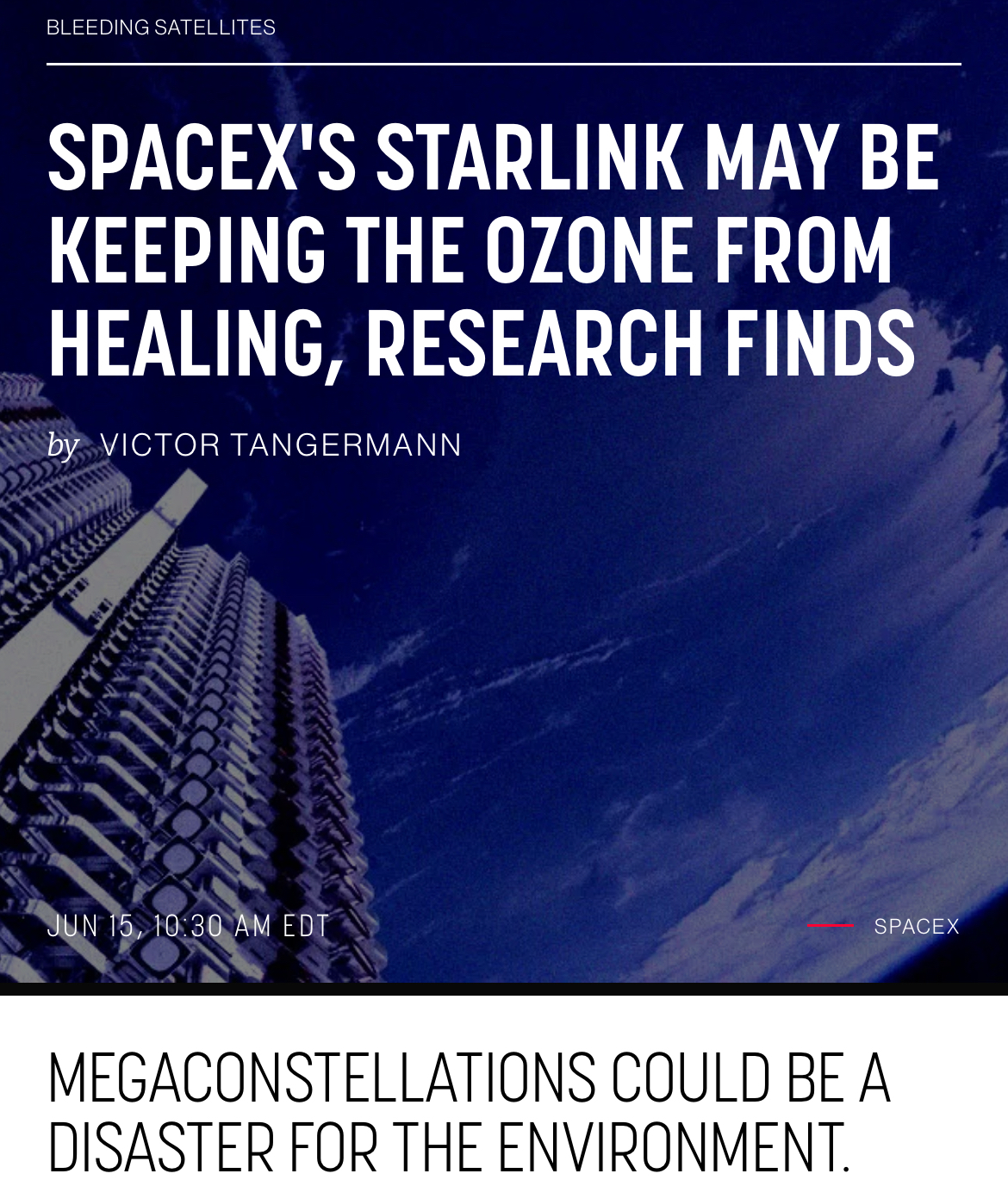SpaceX's growing Starlink megaconstellation could be hindering the Earth's atmosphere from healing itself.
In a new study, researchers from the University of Southern California estimated the harmful effects from satellites injecting harmful pollutants such as aluminum oxides into the upper atmosphere as they burn up during reentry.
These dying satellites may even be contributing to "significant ozone depletion," according to the researchers. The ozone layer is the Earth's "sunscreen" that shields us from too much UV radiation from the Sun.
While researchers have largely focused on the pollutants being released by rockets as they launch, we've only begun to understand the implications of having thousands of retired and malfunctioning satellites burn up in the atmosphere.
And that's only becoming more relevant, as SpaceX has already launched almost 6,000 Starlink satellites to date, and is planning to add tens of thousands more — orbital ambitions that are now inspiring competing satellite constellations.
"Only in recent years have people started to think this might become a problem," said coauthor and University of Southern California astronautics researcher Joseph Wang in a statement. "We were one of the first teams to look at what the implication of these facts might be."
#Poking Holes
Since it's practically impossible to get accurate readings from the kind of pollutants satellites release as they scream back through the atmosphere, scientists can only estimate their effects on the surrounding environment.
By studying how common metals used in the construction of satellites interact with each other, the team estimated that the presence of aluminum increased in the atmosphere by almost 30 percent in 2022 alone.
They found that a 550-pound satellite generates roughly 66 pounds of aluminum oxide nanoparticles during reentry, which would take up to 30 years to drift down into the stratosphere.
In total, if constellations from the likes of SpaceX continue to grow as planned, the levels of aluminum oxides in the atmosphere could increase by a staggering 646 percent over natural levels every year.
And that doesn't bode well, considering we've only begun to study the phenomenon.
"The environmental impacts from the reentry of satellites are currently poorly understood," the researchers note in their paper. "As reentry rates increase, it is crucial to further explore the concerns highlighted in this study."

Elon they could never make me like you
If there's one elon hater left alive, I am him.
If there's no elon haters left, I am dead.